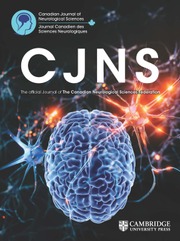No CrossRef data available.
Article contents
P.139 Fixation of Type II Odontoid fractures with anterior single screw
Published online by Cambridge University Press: 27 June 2018
Abstract
Background: More than 60% of spinal injuries affect the cervical spine,and approximately 20% of all cervical spine injuries involve the axis.The most common axis injury is odontoid fracture.The management of odontoid fractures became less controversial than before. Methods: Thirty consecutive patients(25 males and 5 females)who underwent anterior single screw fixation for recent Type II odontoid fractures at King Fahd Hospital,Al-Madina Al-Munawarah,in Saudi Arabia(SA) between January 2004 and December 2007 were included in this study.Data including clinical examination,imaging studies and operative technique were used to analyze the results of this surgical technique. Results: Single screw for fixation of type II odontoid fracture was found easier and simpler than double screws with the same advantages.This method resulted in immediate spinal stability and preserves normal rotation at C1–2 in all patients.Radiological evidence of bone union achieved in 22 patients(73% of cases);and nonunion in 8 patients(27% of cases).Complications related to surgical procedure and hardware failure were recorded in 4 patients(13% of cases). Conclusions: Direct anterior single screw fixation is an effective,simple,and safe method for treating type II odontoid fractures.It is associated with rapid patient mobilization,minimal postoperative pain,and shorter hospital stay.By this technique,the required anatomical and functional outcome can be obtained through immediate stability of the axis,preserves C1–2 rotatory motion,and achieved high union rate.
- Type
- POSTER PRESENTATIONS
- Information
- Copyright
- © The Canadian Journal of Neurological Sciences Inc. 2018




